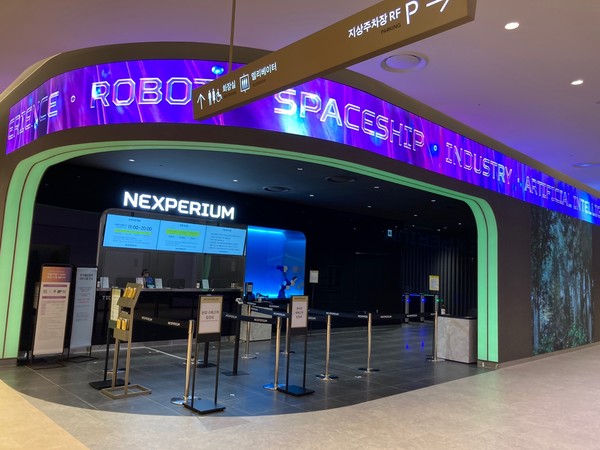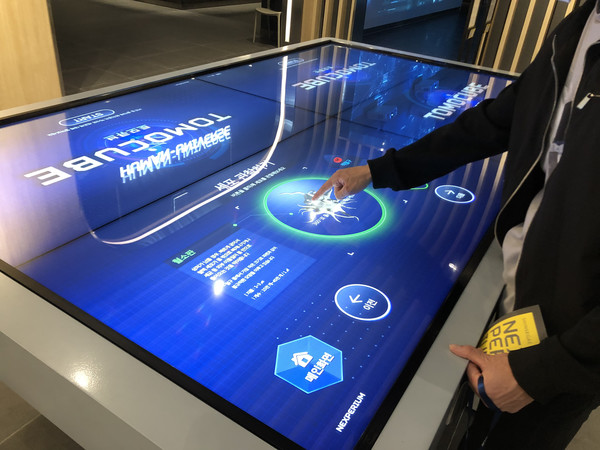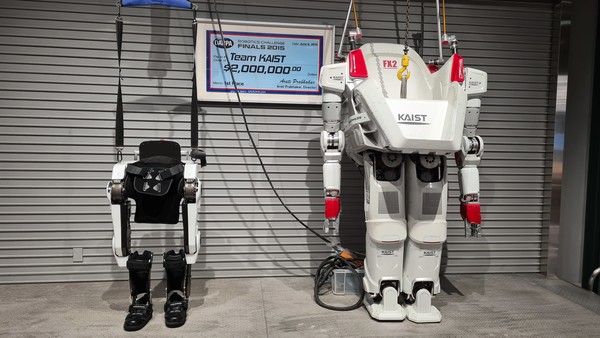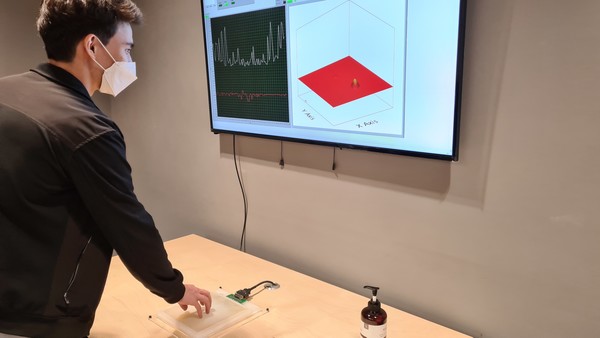On August 27, Shinsegae Department Store opened the doors of its second branch in Daejeon under the name of “Shinsegae Art & Science”. The new location presents itself as an amalgamation of a department store and a cultural space, featuring an art exhibition hall, a science museum, educational centers, an aquarium, and a rooftop park.
Most notably, the science museum NEXPERIUM was organized in collaboration with members of the KAIST faculty. NEXPERIUM, whose name comes from “Next Generation, Experience, Entertainment”, is intended to be a space where anyone can get familiar with the latest advancements in science and research in a playful and interactive manner. In addition to the museum, NEXPERIUM features a science lab that provides workshops on science and technology to both children and adults.

More than 20 KAIST professors from a variety of fields engaged in the project and displayed their work in the museum. Among the departments whose faculty took part in organizing NEXPERIUM are the Department of Mechanical Engineering (ME), the School of Electrical Engineering (EE), the Department of Civil and Environmental Engineering (CEE), the Graduate School of Culture Technology (GSCT), the Department of Physics, the Department of Biological Sciences (BS), and the Department of Material Science and Engineering (MSE). In total, there are 31 major exhibits displayed in the five thematic sections of the museum: Human Matter, Human Body, Human Industry, Human Heart, and Human Universe.

The first section that visitors encounter is Human Matter, featuring exhibits that have the potential to improve human health and daily life. One of the items located in this section is Professor YongKeun Park’s (Department of Physics) Tomocube — bio-imaging technology based on holotomographic microscopy and AI that helps diagnose and treat diseases. Visitors can explore the capabilities of Tomocube’s microscope through an interactive game. Tomocube shares the space with Professor’s Jong-In Han’s (CEE) Air Scrubber — a highly efficient and eco-friendly air purifier.

Human Body showcases research directed towards augmenting human physical abilities and changing the way we experience the world. In this section, visitors can explore recent developments in robotics, neuroimaging, cognitive research, and haptics. Exhibits include the exoskeleton WalkONSuit by Professor Kyoungchul Kong (ME), the widely-known Hubo robots by Professor’s Jun-ho Oh (ME), and robotic sensory skin jointly developed by Professors Steve Park (MSE) and Jung Kim (ME). Visitors also get a chance to assemble and operate a small robot in the designated play zone.

Human Industry features technologies that transform production, logistics, and construction. One of the most notable exhibits is Smart Farm developed by the Information and Telecommunication Technology Program (ITTP). This system can artificially adjust environmental conditions, such as light, temperature, humidity, carbon dioxide concentration, and nutrient supply, to maintain a stable production of high-quality crops throughout the year.
In addition to reshaping the physical world, technology redefines concepts that are often thought of as inherently human, such as art, creativity, and communication. In Human Heart, one can attend a piano performance produced by a neural network model. VirtuosoNet, developed by Professor Juhan Nam (GSCT), has already performed at the KAIST 50th anniversary ceremony this year in duet with pianist Jong-Hwa Park.

Lastly, advances in space exploration are covered in Human Universe. Visitors can explore space through the eyes of the satellite, see satellite models, and play a simulation of a gyro vehicle.
NEXPERIUM is open every day from 11 a.m. to 8 p.m., with an entrance fee of 18,000 KRW for adults and 26,000 KRW for children. Residents of Daejeon can get a 20% discount by presenting an ID proving their registration address. You can find more detailed information on facilities and reservations here.

